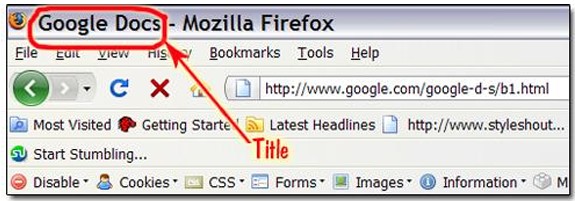New internet marketers don’t need to be afraid of Search Engine
Optimization (SEO) and website optimization. The people who holler most about “Google Slaps” and getting their sites shut down are often those who try to boost their sites in the Search Engines by using questionable methods, trying to “get around” the Search Engines and their guidelines and rules.
Internet marketers who have no intention of using sneaky tactics usually don’t have to worry. However, there are times when you do something that Google doesn’t like, without ever realizing. If you watch your page rank and position on Google search pages at all, that’s when you find out about it.
Rather than scare you with a list of 101 things not to unwittingly do, however, let me get straight down to giving you 10 powerful tips that will make your site solid and “sticky”.
So let’s get right down to our Top 10!
#1 Switch To WordPress for Great Website Optimization
One of the easiest ways to make sure your site is loved by Google and achieve superstar website optimization: Switch to blog format. Specifically, a WordPress blog.
Not only will maintaining your site in WordPress format give you your own easy cut-and-paste content management system, you can add plugs in like All In One SEO that automatically set your site up for Search Engine success.
You can go two ways, when switching to WordPress: You can make your blog mimic a static site – using “Pages” instead of “Posts”, and making a few other minor alterations; or you can add information in real-time, as a true blog.
Either way, you can use plug ins and keywords (“Tags”, in WordPress.)
One other plug in you should definitely use, however, if you’re planning to go the WordPress route: Akismet.
Akismet is a powerful spam-stopper. One of the drawbacks of WordPress, if comments are enabled, lies in the ability of spammers to leave bogus “comments”, stuffed with spam links – many of them unpleasant and guaranteed to get you banned or blocked.
However, if you have Akismet enabled and set up, the spam comments are designated as such, and held harmlessly until you decide to delete them.
Both of these plugins have to be configured, once installed – but that’s walk-in-the-park easy. You can find many useful plug-ins that instantly add functions to your blog website. Don’t overdo the plug-ins, however – they can make your site unwieldy and hard to navigate.
Other well-optimized content management systems include Joomla, Drupal, and DNN Platform. Although my preference is WordPress, I can tell you that all three provide built in tools for website optimization.
#2 Don’t Ignore Your Title Tags
Title tags are the same text links you see on search engine pages, in response to your query using a key phrase – so why do so many people ignore them?
On your HTML page, they look like this:

To clear up a common cause of confusion, the Title tags are not the headers that appear on your browser display screens.They control what appears at the very top of your browser, like this:

They add significantly to the search engine value attached to your page – yet people make a number of common Title tag mistakes, over and over again.
If you’d like to create Search Engine friendly Title tags for website optimization, follow these 3 simple rules:
- Respect the 65 character limit
- Change the Title Tag for each page of your site (each page
should have its own unique title) - Don’t overdo the keywords – while it’s good to use a keyword as your title, make sure it’s a relevant one, and don’t repeat it too many times elsewhere on the page.
Many people who do use static website Title tags properly don’t seem to realize that these rules also apply to blog posts. The Title of your post is exactly the same as what’s contained inside the Title tag of a static web page. Exceeding the 65 character limit is a common mistake seen often, when people use blogs as their websites.
It shouldn’t be.
#3 The Loves – And Hates – Of Search Bots And Spiders
Fortunately you don’t have to be a genius, to quickly learn what Search Bots love and hate. Their main purpose is to determine the theme of your website.
| Search Bots LOVE | Search Bots HATE |
| Favicons | Lack of Mobile-Friendliness |
| Metatags and Doc Type declarations | Poor Navigation |
| Properly validated code with no mistakes | Slow page speed to load |
| Keyword Phrase in Title Tag | Cluttered ads |
| Graphics that have ALT tags filled in | Graphics with no ALT tags |
| Unique, original content | Plagiarism or Duplication of content |
| Primary Keyword in Title and First Paragraph | Keyword “stuffing” all through the page |
#4 Submit Your Site To Website Directories
This is a step many people omit – and it’s an important one. It’s like
submitting articles to Article Directories; only in this case, you’re submitting sites to Site Search Engine Directories.
The most important one every site should be submitted to (once): Open Directory Project (ODP).
It takes a while for ODP to index you, but it’s well worth it. ODP ranks highly in Google’s graces – and each site is checked out by “hand” – that is, a real, live editor reviews it and either accepts or rejects your site.
You should also submit your site to directories specific to your website’s slant: For example, you might want to submit an Art website to an Art Website Directory.
Just make sure that your site has been validated, has no mistakes, and is properly optimized and complete first. (ODP particularly hates those “Under Construction” signs.)
#5 Create Quality Back links for Website Optimization
The best way to do this is “as naturally as possible”. Do not go for those “1000 links for only X dollars!” deals – this will only result in your site getting banned.
The best way to create back links quickly is not to post comments in forums (though that does have a strong and valid place) but to submit quality 350-700 word articles relevant to your niche to Article Directories like Hub Pages.
As in your website content, put your primary Keyword Phrase for the article in the Title and the First paragraph. That’s all – nowhere else, unless it would be really odd not to include it.
Make sure there are no links in the body of your articles – but do include a Resource Box that contains a back link to your website.
If you do post comments on blogs, make sure they are highly relevant and contribute to the “discussion” – comments like “Nice site” are virtually useless.
#6 Use Correctly Worded Anchor Text In Your Links
“Anchor Text” are the words you insert between link tags. For example:

The text that you actually see (underlined) on the page as a link – the words between the Teal text – is your “Anchor Text.”
The best idea is to use your keyword phrase as your anchor text. If you want to put your actual Domain Name in as the anchor text, this brings us to our next powerful tip…
#7 Make Your Domain Name Your Primary Keyword for Website Optimization
This is one of the best ways to rank highly in Google’s search engine for website optimization!
So instead of calling your site something delightfully creative, like “Purple Dragon Flagons”, do some careful keyword research. Check in Wordtracker, to see what people are searching for – you’d enter the word “flagons” to have relevant phrases suggested. Look in the Google Adwords tool to make sure there is some competition (a phrase with full competition is usually too hard to beat; and a phrase with no competition is usually not worth your while.)
You might end up with something like: “stoneware-flagons-oregon.com” as your domain name – even if your Title (and the large header on your page) still read as Purple Dragon Flagons. (The only exception to this practice occurs when you are on a focused campaign to “brand” your domain name.)
#8 Track Your Website
Do use tracking tools like Google Analytics (and checking the stats in your cPanel) to see where your traffic is coming from and what pages are bringing in the most traffic. This will help you know what to discard, and what to refine and include even more.
#9 Avoid SEO Scams
If you are ever tempted to hire an SEO company, never use the ones who appear suddenly in your email inbox, saying things like, “We noticed your site is not doing well. Contact us for a…” This is pure, unsolicited spamming, and reputable companies won’t do that. If you are considering letting an SEO professional or company handle your optimization and backlink campaign, choose one that does spectacularly itself in the search engines.
Ask for references and testimonials. Check them out thoroughly.
Don’t work with any SEO company that tries to talk you into questionable practices.
#10 Be Creative With Your Keywords
Search Engine bots don’t recognize punctuation. This is good for you, if you have an awkward and unnatural-sounding keyword phrase you want to use on a page.
For example, if your keyword phrase was “French cuisine tricks”, you could entitle that particular web page “French Cuisine Tricks” (this would also go in your TITLE tag!) (And you’d be wise to call the page HTML file: “French cuisine-tricks.html”)
However, if you wanted to make it feel more natural when putting your key phrase in the body of the article, you could use it in your first paragraph like so:

(Just make sure it sounds natural!)
So there you have it: 10 quick and powerful Website optimization tips. Pick and choose as you like – but at least now you know what your choices are; and why certain SEO decisions are good or bad for your website.
If you implement even a few of these, you’ll be far less likely now to find your site suddenly sliding (for no apparent reason) from the pages of Google.







